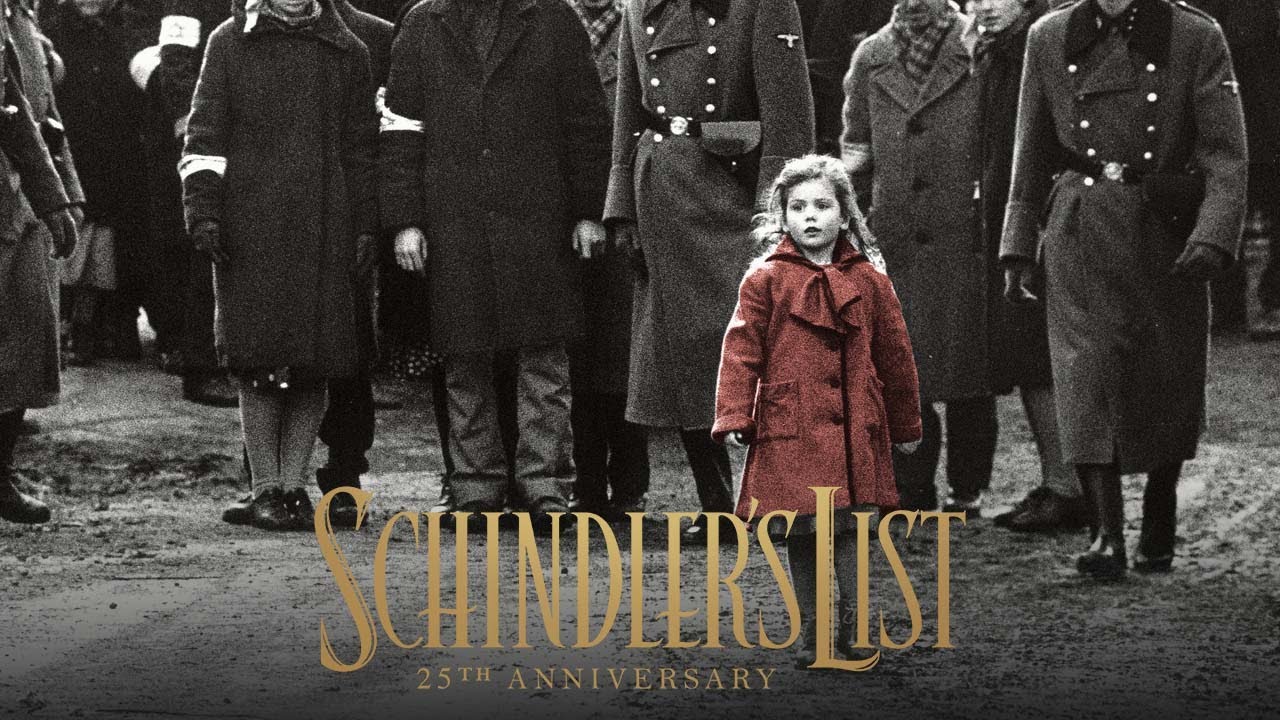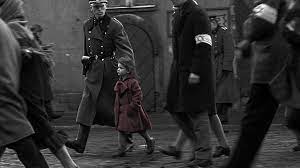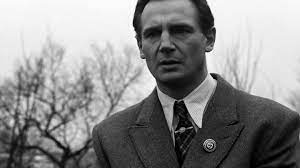🎬 Schindler’s List (1993)
- thaiduong
- January 7, 2025

🎬 Schindler’s List (1993)
Director: Steven Spielberg
Genre: Historical Drama, War
Screenplay: Steven Zaillian
Based On: Schindler’s Ark by Thomas Keneally
Cast: Liam Neeson, Ben Kingsley, Ralph Fiennes, Caroline Goodall, Jonathan Sagall
Plot Summary
Schindler’s List is a harrowing and poignant film based on the true story of Oskar Schindler (Liam Neeson), a German industrialist who saved the lives of over 1,200 Jews during the Holocaust by employing them in his factories. The film is a powerful examination of humanity, moral courage, and the devastating impact of genocide.
Act I: The Rise of Oskar Schindler
Set during World War II in Kraków, Poland, Oskar Schindler arrives as a businessman seeking profit amidst the chaos of war. Using his charm and connections with Nazi officials, Schindler acquires a factory to produce enamelware for the German army. He employs Jewish workers, seeing them as cheap labor, and partners with Itzhak Stern (Ben Kingsley), a Jewish accountant, to manage operations.
Initially, Schindler is motivated solely by profit, exploiting the Jews’ dire situation to enrich himself.
Act II: The Horrors of the Holocaust
As the Nazi regime escalates its persecution of Jews, the Kraków Ghetto is liquidated, forcing its residents into the Plaszów labor camp, overseen by the sadistic commandant Amon Göth (Ralph Fiennes). Göth’s brutality and casual cruelty shock Schindler, who begins to view his workers not as tools for profit but as human beings in need of protection.
Schindler uses his influence and bribes to shield his workers from Göth’s wrath. He witnesses unimaginable atrocities, including mass executions and the suffering of children, which further ignites his moral transformation.
Act III: The List and the Rescue
As the war nears its end, the Nazis begin implementing the “Final Solution,” planning the mass extermination of Jews in concentration camps. Schindler devises a daring plan to save as many lives as possible by bribing Göth to allow him to move his factory and workers to a safer location in Brünnlitz, Czechoslovakia.
Stern helps Schindler create “The List,” a roster of names representing over 1,200 Jews who are spared from deportation to Auschwitz. Despite immense personal risk and financial sacrifice, Schindler succeeds in transferring his workers and establishing a new factory where production is deliberately sabotaged to avoid contributing to the war effort.
Climax and Conclusion
As the war ends, Schindler is forced to flee to avoid capture by the Allies as a member of the Nazi Party. In an emotional farewell, his workers present him with a ring inscribed with a Talmudic phrase: “Whoever saves one life, saves the world entire.”
Schindler breaks down, lamenting that he could not save more lives. The film ends with a moving epilogue in which the real survivors, along with actors portraying them, visit Schindler’s grave in Jerusalem to pay their respects.
Themes and Analysis
- Moral Transformation
Schindler’s journey from a self-serving opportunist to a savior of lives highlights the potential for moral growth and the capacity for individuals to effect profound change in the face of evil. - The Atrocities of War
The film starkly depicts the horrors of the Holocaust, emphasizing the brutality and inhumanity inflicted upon millions of Jews. - Courage and Sacrifice
Schindler’s willingness to risk his life and fortune for others underscores the power of courage and selflessness in combating injustice. - The Value of Human Life
Through its emotionally resonant narrative, the film emphasizes the intrinsic worth of every individual life, no matter how dire the circumstances.
Performances
- Liam Neeson: As Oskar Schindler, Neeson delivers a masterful performance, capturing the complexity of a man whose actions defy simple categorization.
- Ben Kingsley: As Stern, Kingsley embodies quiet strength and moral clarity, serving as Schindler’s conscience and confidant.
- Ralph Fiennes: Gives a chilling and unforgettable performance as Amon Göth, a character who embodies the banality of evil.

Visual Style and Direction
Steven Spielberg uses stark black-and-white cinematography to underscore the film’s historical weight and emotional gravity. The choice enhances the documentary-like realism, while moments of color, such as the iconic red coat worn by a young girl, highlight the devastating loss of innocence and the individual cost of genocide.
The haunting score by John Williams, featuring violin solos by Itzhak Perlman, deepens the film’s emotional resonance, perfectly complementing its visuals and narrative.
Reception and Legacy
Schindler’s List was universally acclaimed and won seven Academy Awards, including Best Picture and Best Director for Steven Spielberg. The film is widely regarded as one of the greatest films ever made and a cornerstone of Holocaust cinema.
Its impact extends far beyond entertainment, serving as an educational tool and a stark reminder of the horrors of genocide. The film’s success also cemented Spielberg’s legacy as a filmmaker capable of creating deeply meaningful and transformative works.
Conclusion
Schindler’s List is a cinematic masterpiece that transcends its medium to become a historical and moral testament. Through its unflinching portrayal of the Holocaust and its celebration of human courage, the film continues to resonate with audiences, reminding the world of the importance of remembering history and standing against injustice. It is a profoundly moving experience that leaves an indelible mark on all who watch it.